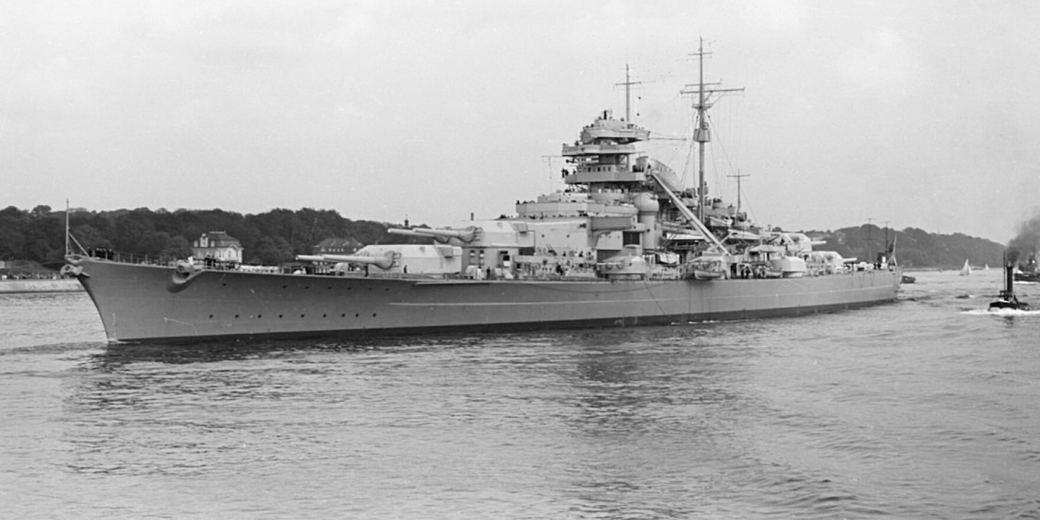The Bismarck: steel behemoth of the Kriegsmarine

In the annals of naval warfare history, few battleships have garnered as much attention as the German battleship Bismarck.
Commissioned in August 1940, the Bismarck was the largest and most powerful warship in the world at the time. This 50,300-ton leviathan, boasting state-of-the-art technology and formidable firepower, became a symbol of the Kriegsmarine's might during World War II.
The Bismarck's short, yet eventful career ended in May 1941, but its legend continues to endure, inspiring numerous books, documentaries, and films.
Construction and Design
The Bismarck was the lead ship of the Bismarck-class battleships, designed by the German naval architect Dr. Fritz Todt.
Her construction began in July 1936 at the Blohm & Voss shipyard in Hamburg, Germany. The ship was named in honor of Otto von Bismarck, the first Chancellor of the German Empire.
The Bismarck was designed to be a formidable force, equipped with eight 15-inch (38 cm) guns, a top speed of 30 knots, and heavily armored to withstand enemy fire.
The ship had a length of 251 meters (823 ft), a beam of 36 meters (118 ft), and a draft of 10 meters (33 ft).
The Bismarck's power came from 12 high-pressure boilers and three geared turbines, which generated 150,170 shaft horsepower.
Preparing for Action
The Bismarck's brief but eventful operational history began with her commissioning on August 24, 1940, under the command of Captain Ernst Lindemann.
After conducting sea trials and training exercises in the Baltic Sea, the battleship was ready for her first mission, code-named Operation Rheinübung.
Operation Rheinübung
In May 1941, the Bismarck, along with the heavy cruiser Prinz Eugen, embarked on Operation Rheinübung, a mission to disrupt Allied shipping in the North Atlantic.
The two ships managed to evade British naval patrols and entered the Atlantic, where they sank the British battlecruiser HMS Hood and damaged the battleship HMS Prince of Wales in the Battle of the Denmark Strait on May 24, 1941.
The loss of the Hood, a symbol of British naval power, shocked the British Admiralty, and the hunt for the Bismarck became a top priority.
Final Battle and Sinking
After the Battle of the Denmark Strait, the Bismarck attempted to reach the safety of German-occupied ports in France.
However, a lucky hit by a torpedo from a British Fairey Swordfish aircraft damaged the ship's rudder, rendering it unmaneuverable.
On May 27, 1941, the Bismarck was intercepted by a British naval task force led by the battleships HMS King George V and HMS Rodney, along with the heavy cruisers HMS Dorsetshire and HMS Norfolk.
In a fierce engagement that lasted nearly two hours, the Bismarck was pummeled by more than 400 shells, causing her to lose all combat capability.
With the situation hopeless, Captain Lindemann gave the order to abandon ship. The Bismarck began to capsize and eventually sank, taking with her more than 2,000 crew members.
The Royal Navy rescued only 114 survivors.
How it is remembered today
The Bismarck's story remains a compelling chapter in naval history, symbolizing the intense naval engagements of World War II.
Despite her short-lived career, the battleship's impact on the war and the resources committed to her pursuit and destruction demonstrated the importance of naval power during the conflict.
Today, the Bismarck continues to captivate historians, military enthusiasts, and the general public alike, serving as a testament to the technological advancements,
strategic decisions, and human courage exhibited during World War II.
The wreck of the Bismarck was discovered by oceanographer Dr. Robert Ballard in June 1989, at a depth of approximately 4,791 meters (15,719 ft) in the Atlantic Ocean.
The discovery led to renewed interest in the ship's history and spurred further research into her construction, capabilities, and final moments.
The Bismarck's brief but impactful operational history has solidified its place as one of the most famous battleships in naval history.
The ship's advanced design, immense firepower, and tragic end continue to capture the imagination of people around the world, serving as a reminder of the complex and often devastating nature of war.
What do you need help with?
Download ready-to-use digital learning resources
Copyright © History Skills 2014-2025.
Contact via email
With the exception of links to external sites, some historical sources and extracts from specific publications, all content on this website is copyrighted by History Skills. This content may not be copied, republished or redistributed without written permission from the website creator. Please use the Contact page to obtain relevant permission.





